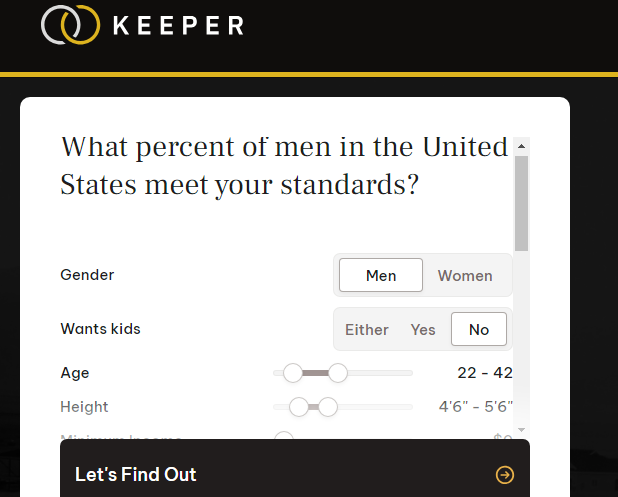Embark on a journey into the world of artificial intelligence excellence with the comprehensive insights offered in this guide. The Keeper AI Standards Test is your key to unlocking the full potential of AI systems, ensuring they operate with precision and reliability. Whether you’re a seasoned AI professional or just beginning your journey, this guide provides invaluable knowledge to help you navigate the complexities of AI testing.
Table of Contents
Introduction
In the ever-evolving world of artificial intelligence, ensuring the performance and reliability of AI systems is paramount. Enter the Keeper AI Standard Test a rigorous, structured approach to evaluate and enhance AI capabilities. But what exactly is Keeper AI, and why is its standard testing so crucial?
Understanding Keeper AI
Definition and Purpose
Keeper AI is an advanced artificial intelligence system designed to streamline various processes across different industries. Its purpose ranges from data analysis and predictive modeling to automating routine tasks and enhancing decision-making.
Key Features of Keeper AI
Some standout features of Keeper AI include its adaptive learning algorithms, robust data security measures, and intuitive user interface. These attributes make it a versatile tool for businesses looking to leverage AI technology effectively.
The Need for AI Standards Testing
Ensuring Reliability and Accuracy
AI systems, no matter how advanced, can falter without regular testing. The Keeper AI Standards Test ensures that the system performs reliably and delivers accurate results, which is crucial for maintaining trust and efficiency.
Enhancing User Experience
Regular testing also helps in fine-tuning the AI to meet user expectations, thereby enhancing the overall user experience. A well-tested AI system is more likely to provide relevant and accurate outputs, which can significantly boost user satisfaction.
Components of the Keeper AI Standards Test
Data Collection
Collecting relevant data is the first step in the Keeper AI Standard Test. This data serves as the foundation for evaluating the AI’s performance and making necessary adjustments.
Algorithm Analysis
Once the data is collected, the next step involves analyzing the algorithms used by Keeper AI. This analysis helps in understanding how the AI processes information and makes decisions.
Performance Metrics
Performance metrics are used to measure the effectiveness of Keeper AI. These metrics include accuracy, precision, recall, and other key performance indicators (KPIs) that provide insights into the AI’s performance.
Steps Involved in Keeper AI Standards Test
Initial Setup
The first step in the standard test is the initial setup, which involves configuring the AI system and preparing it for testing.
Data Preparation
Next, the relevant data is prepared and formatted to ensure it can be effectively used for testing the AI system.
Running the Test
Once the data is ready, the test is run to evaluate the AI’s performance. This step involves monitoring the AI’s responses and analyzing the results.
Data Collection in Keeper AI Standards Test

Types of Data Required
Different types of data are required for a comprehensive evaluation of Keeper AI. This includes structured data (like databases) and unstructured data (like text and images).
Methods of Data Collection
Data can be collected using various methods, including surveys, web scraping, and real-time data feeds. The goal is to gather diverse and relevant data to ensure a thorough evaluation.
Algorithm Analysis in Keeper AI Standards Test
Evaluating Algorithms
Evaluating the algorithms involves examining their efficiency, accuracy, and robustness. This step is crucial for understanding how well the AI can perform its intended tasks.
Importance of Algorithm Robustness
Algorithm robustness ensures that the AI can handle diverse and unexpected data inputs without failing. This is essential for maintaining reliability in real-world applications.
Performance Metrics in Keeper AI Standards Test

Key Performance Indicators (KPIs)
KPIs are critical in measuring the success of Keeper AI. These indicators provide a clear picture of how well the AI is performing and where improvements are needed.
Understanding Accuracy, Precision, and Recall
Accuracy, precision, and recall are fundamental metrics in AI performance. Accuracy measures the overall correctness, precision focuses on the relevance of results, and recall assesses the completeness of the results.
Benefits of Keeper AI Standards Test
Improved Accuracy
Regular testing helps in fine-tuning the AI algorithms, leading to improved accuracy in results and predictions.
Enhanced Security
Security is another significant benefit. The Keeper AI Standard Test helps identify and mitigate potential security risks, ensuring that the AI operates safely and securely.
Better User Satisfaction
Ultimately, a well-tested AI system leads to better user satisfaction, as it can deliver more reliable and relevant results.
Challenges in Keeper AI Standards Test
Data Privacy Issues
One of the primary challenges is ensuring data privacy. Protecting sensitive information while conducting tests is crucial to maintaining user trust.
Complexity of Algorithms
The complexity of AI algorithms can also pose a challenge. Ensuring that these complex systems perform optimally requires extensive testing and analysis.
Ensuring Unbiased Results
Bias in AI systems is a significant concern. The Keeper AI Standard Test includes measures to identify and reduce bias, ensuring fair and unbiased results.
Case Studies: Success Stories with Keeper AI Standards Test
Real-World Applications
Numerous real-world applications have benefited from the Keeper AI Standard Test. For instance, healthcare providers have used it to improve diagnostic accuracy, while financial institutions have enhanced fraud detection.
Impact on Different Industries
The impact of Keeper AI Standard Test spans various industries, including healthcare, finance, retail, and more. Each industry has seen significant improvements in efficiency and accuracy due to rigorous AI testing.
Best Practices for Implementing Keeper AI Standards Test
Regular Updates and Maintenance
Regular updates and maintenance are crucial for keeping the AI system up-to-date and performing optimally.
Continuous Monitoring and Feedback
Continuous monitoring and feedback help in identifying issues early and making necessary adjustments promptly.
Future Trends in Keeper AI Standards Test
Emerging Technologies
Emerging technologies like quantum computing and advanced neural networks are expected to influence the future of AI standard testing.
Predictions for the Future
The future of Keeper AI Standard Test looks promising, with advancements in technology leading to more efficient and reliable AI systems.
How to Use the Keeper AI
- Go to the Website
- Fill Out the Form
- Get Your Results
Conclusion
In summary, the Keeper AI Standards Test is a comprehensive approach to evaluating and enhancing AI performance. By focusing on data collection, algorithm analysis, and performance metrics, this test ensures that AI systems are reliable, accurate, and secure. As AI technology continues to evolve, regular testing will remain a cornerstone for maintaining high standards and achieving optimal results.
Frequently Asked Questions (FAQs)
What is the Keeper AI Standard Test?
The Keeper AI Standard Test is a structured approach to evaluate the performance and reliability of Keeper AI systems through data collection, algorithm analysis, and performance metrics.
How does Keeper AI ensure data privacy during testing?
Keeper AI employs advanced security measures and data anonymization techniques to protect sensitive information during the testing process.
What industries benefit most from Keeper AI Standard Test?
Industries such as healthcare, finance, retail, and logistics benefit significantly from the Keeper AI Standard Test due to improved accuracy and efficiency in their operations.
How often should the Keeper AI Standard Test be performed?
Regular testing is recommended, ideally on a quarterly basis, to ensure that the AI system remains up-to-date and performs optimally.
What are the main challenges in conducting the Keeper AI Standard Test?
The main challenges include ensuring data privacy, managing the complexity of algorithms, and preventing biased results in the AI system.
If you found our content helpful don’t forget to share it on your social media: Twitter
More Articles: Home





